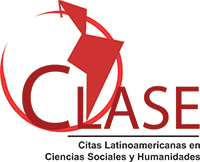CREENCIAS SOBRE LA RELACIÓN ENTRE EL HOMBRE Y LA NATURALEZA EN LOS ESTUDIANTES DE LA UAM-IZTAPALAPA
Resumen
A través del tiempo, la forma en que las personas conciben las relaciones entre los seres humanos y la naturaleza ha cambiado, aparentemente el nuevo paradigma medioambiental ha ido sustituyendo al
antiguo paradigma donde se creía que los humanos estaban por encima de la naturaleza; sin embargo, este proceso de cambio de creencias adquiere características especiales en diferentes grupos humanos.
En este artículo se presentan los resultados de una investigación realizada con estudiantes de la Universidad Autónoma Metropolitana Unidad Iztapalapa, de la Licenciatura en Administración con el objetivo
de explorar sobre sus creencias acerca del medio ambiente, utilizando la escala desarrollada por Dunlap y Van Liere (1978), llamada el nuevo paradigma medioambiental – paradigma de la excepción humana
(NEP-HEP).
Descargas
Citas
Adeola, F. O. (1996). “Environmental contamination, public hygiene, and human health concerns in the third world: The case of Nigerian en- vironmentalism”, Environment and Behavior, 28(5), 614-646.
Aiken, L. R. (1996). Test Psicológicos y Evaluación, 8 ed, Prentice Hall, México.
Albrecht, Bultena, Hoiberg, y Nowak (1982). “The new environmental pa- radigm scale, Journal of Environmental Education, 13, 39–43.
Bazán Aldo, Sánchez Beatriz y Castañeda Sandra (2007). “Relación estruc- tural entre apoyo familiar, nivel educativo de los padres, caracte- rísticas del maestro y desempeño en lengua escrita”, Revista Mexi- cana de Investigación Educativa, abril- junio, año/vol.12, número 033, COMIE, México, pp. 701-729.
Bechtel, R., Corral-Verdugo, V., y Pinheiro, J. (1999). “Environmental be- lief systems, United States, Brazil and Mexico”, Journal of Cross Cultural Psychology, 30, 122–128.
Bentler, P. M. (1993). EQS: Structural equations program manual, Statis- tical Software, BMDP Los Angeles.
Chokor, B. A. (1993). “Government policy and environmental protection in the developing world: The example of Nigeria”, Environmental Management, 17(1), 15-30.
Corral-Verdugo V, Betchel R., Asai M. y Gonzalez A. (2006). “A cross-cul- tural study of environmental belief structures in USA, Japan, Mexi- co, and Peru”, International Journal of Psychology, 2006, 41 (2), 145–151.
Corral-Verdugo V; Armendariz L. (2000). “The New Environmental Para- digm in a Mexican Community”, Journal of Environmental Educa- tion, spring 2000 v31 i3 p25.
Correa, M.I. (2005). “Principales Aspectos que Influyen en las Actitudes hacia el Medio Ambiente en los Mexicanos”, Revista Denarius 13 (2) del Departamento de Economía. UAM- Iztapalapa, (ISNN 1665- 8221), 2005.
Dunlap y Van Liere (1978). “The new environmental paradigm”, The Jour- nal of Environmental Education, 9(4), 10- 19.
Edgell and Nowell (1989). “The New Environmental Paradigm Scale: Wil- dlife and environmental beliefs in British Columbia”, Society and Natural Resources, 2(4), 285-296.
Ferrán, Arnaz Magdalena (2001). SPSS para Windows Análisis Estadís- tico, Mc Graw Hill.
Gardner Robert (2003). Estadística para Psicología Usando SPSS para Windows, Ed. Prentice Hall.
Gooch, G. F. (1995). “Environmental beliefs and attitudes in Sweden and the Baltic states”, Environment & Behavior, 27(4), 513-539.
Gorsuch, R. (1983). Factor analysis, 2nd ed., Erlbaum, Hillsdale, NJ.
Gorsuch, R. (1988). “Exploratory factor analysis”, in J. R. Nesselroade & R. B. Cattell (Eds.), Handbook of multivariate experimental, psycho- logy, Plenum Press, New York.
Kuhn, R. G., y Jackson, E. L. (1989). “Stability of factor structures in the measurement of public environmental attitudes”, The Journal of Environmental Education, 20(3), 27-32.
López Olivas Miguel (2006). “Preparación y calibración de reactivos: me- dición de y para el aprendizaje”, En Castañeda Figueiras, Sandra (Coord), Evaluación del Aprendizaje en el nivel universitario. Ela- boración de exámenes y reactivos objetivos, UNAM y CONACYT.
Noe, F. P., & Snow, R. (1990). “The new environmental paradigm and further scale analysis”, The Journal of Environmental Education, 21(4), 20-26.
Nunnally, J. C. (1987). Teoría Psicométrica, Trillas, México.
Schmuck and Schultz (2002). “Sustainable development as a challenge for psychology”, in P. Schmuck y P. Wesley (Eds.) Psychology of sustai- nable development, Kluwer, Norwell, MA.
Pierce, J., Lovrich, N., Tsurutami, T y Abe, T. (1986). “Culture, politics and mass publics: Traditional and modern supporters of the new envi- ronmental paradigm in Japan and the United States”, The Journal of Politics, 49(1), 54-79.
Ramírez, S. (1977). El Mexicano, psicología de sus motivaciones, Grijal- bo, México,
Stern, Dietz, y Guagnano (1995). “The new ecological paradigm in socio- physicological context”, Journal of Management and Technology, 17(2), 61-65
Thorndike, R. L. (1989). Psicometría Aplicada, Limusa, México.

Esta obra está bajo licencia internacional Creative Commons Reconocimiento-NoComercial-CompartirIgual 4.0.














